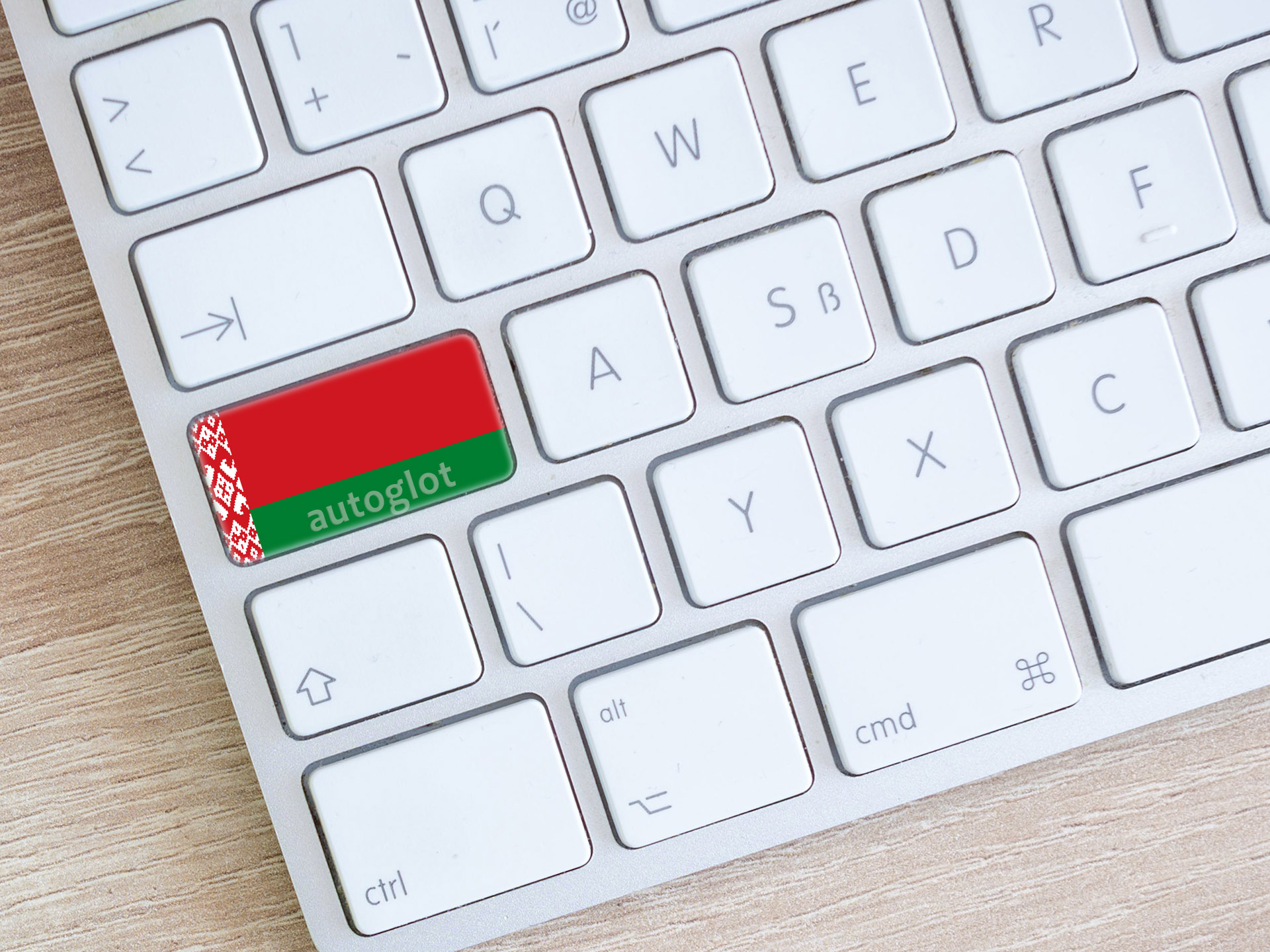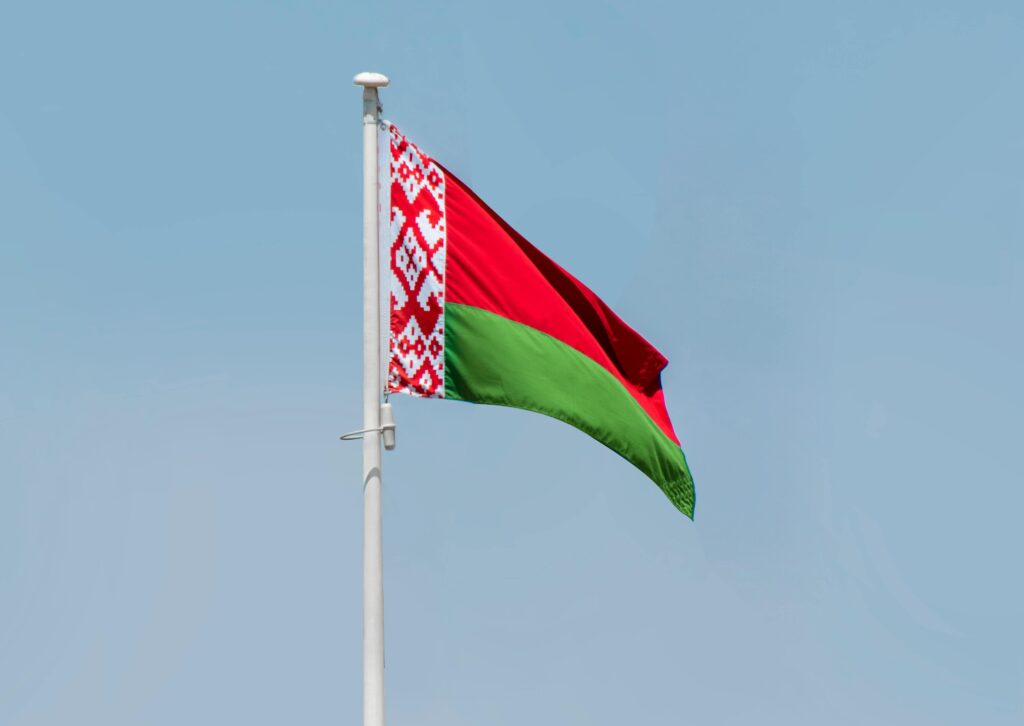
Multilingual websites open up new opportunities to reach global audiences and expand your market. By offering content in multiple languages, businesses can engage users more effectively, increase traffic, and improve customer satisfaction. For WordPress site owners, translating your site into different languages isn’t just an option, it’s a necessity to stay competitive in today’s digital landscape.
Introduction: Benefits of Multilingual Websites and Importance of Translation to Belarusian
Belarusian is a valuable language to consider when expanding your website’s reach in Eastern Europe. As the official language of Belarus, it holds cultural significance and connects businesses with a unique audience. Even though many people in Belarus are bilingual and understand Russian, providing content in Belarusian can resonate better with local users, helping to build trust and loyalty.
Key Benefits of Translating Your Website to Belarusian:
- Improved User Experience: Users are more likely to engage with content in their native language, leading to better on-site experiences.
- Increased Accessibility: Translating to Belarusian makes your website accessible to a population that values its national language.
- SEO Advantages: By translating your WordPress site to Belarusian, you can enhance your search engine visibility in Belarusian-speaking regions. Search engines reward multilingual websites, helping you rank higher in local searches.
- Cultural Connection: Belarusian-speaking users feel more connected to websites that cater to their language, which can increase conversion rates and boost your credibility in Belarus.
For any business targeting Belarusian-speaking regions, offering a website in Belarusian can lead to more engaged users. It’s an investment that can pay off by growing your online presence in a culturally relevant way.
Belarusian Language
Belarusian is the official language of Belarus and one of the East Slavic languages, alongside Russian and Ukrainian. It is primarily spoken in Belarus, where it shares official status with Russian, but it also has a strong historical and cultural significance in the region. Belarusian has evolved over centuries, influenced by neighboring languages and historical events, yet it retains a unique identity that distinguishes it from other Slavic languages.

History of the Belarusian Language
The origins of Belarusian can be traced back to the Old East Slavic language spoken in the medieval state of Kievan Rus. As Belarusian territories became part of the Grand Duchy of Lithuania, the language developed its own distinct features. Over time, Belarusian literature flourished, especially during the Renaissance period, but the language faced suppression during the Russian Empire and Soviet Union eras, where Russian dominated public life. Today, Belarusian is experiencing a resurgence as a symbol of national identity and pride.
Structure, Vocabulary, and Grammar of Belarusian
Belarusian shares many similarities with other Slavic languages but also has unique characteristics that set it apart. The language uses the Cyrillic alphabet, with minor differences in some letters compared to Russian. Its phonetics and vocabulary are closely related to Russian and Ukrainian, making it easier for speakers of these languages to understand Belarusian to some extent. However, it retains distinct words and pronunciations that give it its own flavor.
Belarusian grammar, like most Slavic languages, is relatively complex, featuring noun cases, verb conjugations, and gendered nouns. Despite these complexities, learners often find Belarusian easier to pick up if they are familiar with other Slavic languages. Its sentence structure follows the Subject-Verb-Object pattern, common to many languages, which aids in comprehension.
How Easy is it to Learn, Speak, and Understand Belarusian?
For speakers of Russian or Ukrainian, learning Belarusian can be relatively straightforward due to the shared linguistic roots. Non-Slavic language speakers might face more challenges with the Cyrillic script and the grammar rules, but with proper practice and immersion, Belarusian is an accessible language. Understanding spoken Belarusian is also manageable for those familiar with Russian or Ukrainian, as many words overlap, though pronunciation can vary.
In modern Belarus, many people understand Belarusian, even though Russian is widely spoken in daily life. This creates a bilingual environment where Belarusian is primarily used in cultural, historical, and literary contexts, but it remains an important marker of national identity.
Belarusian-speaking People
Belarusian is spoken primarily in Belarus, a country located in Eastern Europe, where it is one of the two official languages alongside Russian. Although Russian is more commonly used in everyday life, Belarusian holds great cultural significance and is still widely understood by the majority of the population. Efforts to promote the use of Belarusian in education, media, and public life have been growing in recent years, as it plays a crucial role in national identity.

Population That Speaks Belarusian
Around 8 to 9 million people worldwide are estimated to speak Belarusian to varying degrees. The majority of Belarusian speakers live in Belarus, where it is taught in schools, used in some media outlets, and often heard in cultural settings. However, the actual number of native Belarusian speakers—those who use it as their first language—has diminished over time due to the prevalence of Russian in the country.
Outside of Belarus, smaller Belarusian-speaking communities exist in other countries, particularly in nations that experienced waves of Belarusian emigration during the 20th century. These communities are often found in Poland, Lithuania, Ukraine, and Russia, as well as in diaspora populations in the United States, Canada, and other Western nations.
Countries Where Belarusian Is Official
Belarusian is the official language of Belarus, along with Russian, giving it a unique legal status in the country. Although Russian is dominant in many aspects of public life, Belarusian is protected by law and is used in government documents, educational institutions, and cultural works. However, it’s worth noting that many Belarusians are bilingual, seamlessly switching between Russian and Belarusian depending on the context.
Countries Where People Speak Belarusian
In addition to Belarus, Belarusian is spoken by smaller communities in neighboring countries like Poland, Lithuania, and Ukraine. These communities maintain their linguistic traditions, often in regions close to the Belarusian border, where the language has historical roots. In Poland, for example, the Belarusian minority in the eastern regions still uses the language in some schools and cultural activities.
The Belarusian diaspora in countries like the United States, Canada, and Argentina also maintains its linguistic heritage. In these communities, Belarusian is often preserved through cultural organizations, churches, and media outlets. While these groups may be small, they continue to promote Belarusian language and culture to future generations.
Though Belarusian may not have the global reach of other languages, it remains a significant cultural force among its speakers, both in Belarus and abroad. For businesses aiming to reach these communities, offering a Belarusian-language version of their website can foster connections and trust.
See also: How To Launch a Successful Multilingual Business Online?
Belarusian on the Internet
Belarusian has a growing presence on the internet, but it is still underrepresented compared to other major languages. While Belarusian is the official language of Belarus, Russian dominates the digital landscape in the country. However, efforts are being made to increase the use of Belarusian online, particularly in areas of culture, education, and media. By translating your website into Belarusian, you can help contribute to the expansion of the Belarusian-language web and engage a wider audience.

How Widespread is Belarusian on the Internet?
The majority of internet content accessed by Belarusian users is in Russian, but the demand for Belarusian-language content is increasing. Belarusian is often used on websites related to cultural heritage, literature, and national identity, but other sectors like e-commerce and news are still heavily reliant on Russian. Despite the limited use of Belarusian online, more and more platforms are offering Belarusian versions of their websites to appeal to local users.
Belarusian Wikipedia and other user-generated platforms are growing steadily, with more people contributing in their native language. Social media platforms have also seen an increase in Belarusian-language posts and discussions, as the younger generation looks to revive and maintain the use of Belarusian in everyday digital communication.
Importance of Having a Belarusian Version of Your Website
Translating your website into Belarusian opens up access to a specific segment of the Belarusian population that prefers to consume content in their native language. While many Belarusians are bilingual, providing a Belarusian version of your site can demonstrate respect for their national identity and culture. This can lead to better user engagement, as users are more likely to trust and connect with content presented in their own language.
Offering a Belarusian version of your website can also help your business stand out from competitors who may only offer Russian-language content. In a market where national pride is on the rise, having a Belarusian-language website can give you a competitive edge.
SEO Advantages of Belarusian Content
From an SEO perspective, having a Belarusian-language version of your website can boost your visibility in local search results. Search engines prioritize websites that cater to local languages, which can help you rank higher in searches conducted in Belarusian. This means that translating your site into Belarusian can help attract more organic traffic from users specifically searching in that language.
As Belarusian-language content continues to grow, offering your website in Belarusian can help future-proof your digital presence in Belarus. It’s a forward-thinking strategy that not only supports your SEO efforts but also strengthens your connection with Belarusian-speaking audiences.
See also: 5 Reasons a Multi-Language Website is Beneficial for your Business
How to Translate a WordPress Site to Belarusian
Translating a WordPress site to Belarusian can be done in several ways, ranging from manual translation to using automated tools. Each method comes with its own set of pros and cons, but the right choice depends on factors like budget, time, and the complexity of the website. For most WordPress site owners, leveraging automated translation tools provides the fastest and most efficient way to create multilingual content.

Major Ways to Translate WordPress Sites to Belarusian
- Manual Translation. Manual translation involves hiring professional translators to translate your website’s content into Belarusian. This option offers high-quality and accurate translations, but it can be time-consuming and expensive, especially for large websites. Manual translation is ideal for businesses that need precision and industry-specific terms in their content.
- Using Translation Plugins. Translation plugins are one of the most popular ways to translate WordPress sites due to their ease of use and cost-effectiveness. Plugins like WPML, Polylang, and TranslatePress allow you to manage and publish multilingual content. However, these plugins often require manual input and configuration, making them better suited for smaller sites or those that need regular updates to their translations.
- Automated Translation Tools. Automated translation tools, such as Autoglot, offer a fully automated solution for translating WordPress sites to Belarusian. These tools use machine translation technologies to automatically translate content, saving time and effort for website owners. Autoglot is especially advantageous for websites with frequent content updates, as it can handle translations without requiring ongoing manual intervention.
Why Use Autoglot for Translating to Belarusian?
Autoglot is a powerful translation plugin that simplifies the process of translating WordPress sites to Belarusian. Unlike other tools that require manual configuration or high costs, Autoglot provides full automation and SEO-friendly translations that help maintain your site’s rankings in Belarusian search results. It’s an ideal solution for those who want a hands-off approach to managing multilingual content.
With Autoglot, you only pay for what you translate, ensuring a cost-effective solution for businesses of all sizes. The plugin supports numerous languages, including Belarusian, and integrates seamlessly with WordPress, making it easy to set up and use without technical expertise. Whether you’re running a blog, e-commerce site, or news portal, Autoglot offers a quick and reliable way to translate your content for Belarusian-speaking audiences.
Autoglot also ensures that the translated content remains SEO-compatible, which is crucial for websites targeting local search traffic. With the plugin’s automated features, you can reach Belarusian speakers without compromising your SEO strategy.
Read more: Multilingual SEO: 5 Best Practices to Remember
Step-by-Step Guide to Translating a WordPress Site to Belarusian
Translating your WordPress site to Belarusian using Autoglot is a straightforward process that doesn’t require technical expertise. With Autoglot’s user-friendly interface and automated translation capabilities, you can have your site translated in a few easy steps. Below is a step-by-step guide to help you through the process.
Step 1: Install and Activate the Autoglot Plugin
- The first step is to install the Autoglot WordPress translation plugin from your WordPress dashboard.
- Go to the “Plugins” section, click on “Add New,” and search for “Autoglot.”
- Once you find it, click “Install” and then activate the plugin.
- This will integrate the Autoglot tool directly into your WordPress site, making it ready to use.
You may also download Autoglot directly from the official WordPress plugins repository.
Official Autoglot WordPress Repository
Step 2: Register in the Autoglot Control Panel
- After installing the plugin, you need to register for an account in the Autoglot Control Panel to access its features.
- Navigate to the Autoglot settings in your WordPress dashboard, where you’ll find a link to the registration page.
- Create an account with your email address, verify it, and you’ll be ready to manage your translation settings.
Autoglot Control Panel lets you control your translation expenses, track usage and order new translation packages.
Autoglot Control Panel
Step 3: Configure the Plugin
- Once registered, go back to the WordPress dashboard and configure the plugin according to your site’s needs.
- In the Autoglot settings, you’ll be able to select your source language (the language your website is currently in), adjust the SEO settings to ensure that your translated content remains optimized for search engines, and choose the appearance of language switcher.
Step 4: Select Belarusian as Your Target Language
- In the plugin’s language settings, select Belarusian from the list of supported languages.
- This tells Autoglot that you want your site’s content to be translated into Belarusian.
- If your website supports multiple languages, you can add additional target languages at this stage as well.
Step 5: Automatically Translate Your Content
- Once Belarusian is selected as the target language, Autoglot will automatically translate your website’s content into Belarusian.
- This includes pages, posts, meta tags, and even SEO elements, ensuring a comprehensive translation.
- Autoglot uses advanced machine translation to ensure high-quality results with minimal need for manual corrections.
Step 6: Review and Edit the Translated Content
- After the translation is complete, review the translated content to ensure everything looks as expected.
- You can check the accuracy of the translation and make any minor adjustments if necessary.
The Autoglot plugin allows you to manually edit the translations directly within the WordPress editor.
How To Edit Translation in WordPress?
Autoglot makes it easy to maintain and update your translations as your website grows, automatically translating new content as it is published. This step-by-step process ensures that you can offer a fully localized Belarusian version of your WordPress site with minimal effort.
Conclusion
Translating a WordPress site to Belarusian presents unique challenges but also offers significant benefits for businesses looking to expand their reach. From ensuring accuracy in translation to maintaining SEO rankings, creating a multilingual website requires thoughtful planning and reliable tools. However, the effort is well worth it, as it opens doors to new audiences, particularly in Belarus and among the Belarusian-speaking population worldwide.
Challenges of Translating WordPress Sites to Belarusian
One of the key challenges in translating a WordPress site to Belarusian is ensuring high-quality, contextually accurate translation. Machine translations, while fast, can sometimes struggle with nuances and idiomatic expressions, making it important to review the translated content. In addition, maintaining proper SEO configurations across languages can be a complex process, especially when dealing with multiple language versions of a site.
Another challenge is keeping translations up to date as new content is added to your site. For websites that frequently publish new articles, blog posts, or product updates, manual translations can quickly become overwhelming and costly. This is where automated solutions like Autoglot shine, offering real-time updates and seamless integration with your WordPress content.
Benefits of Translating WordPress Sites to Belarusian
Translating your website into Belarusian allows you to tap into a growing market of Belarusian-speaking internet users. With the rising popularity of the Belarusian language online, offering content in their native language makes your website more accessible and user-friendly for this audience. This helps build trust, increases engagement, and boosts conversion rates.
A Belarusian version of your website can also improve your search engine rankings in Belarus and neighboring countries. By optimizing your content for local keywords in Belarusian, you increase your visibility on search engines like Google, Yandex, and others used in the region. This can give your business a competitive edge and drive more organic traffic to your site.
Why Autoglot is the Best Solution for Translating to Belarusian
Autoglot simplifies the translation process, making it the ideal solution for translating your WordPress site to Belarusian. With its fully automated features, it eliminates the need for manual translations and ensures that your site’s content is accurately translated, while maintaining SEO best practices. The plugin’s user-friendly interface allows you to manage and update your translations effortlessly, ensuring that your site stays current without requiring constant attention.
If you’re looking for a hassle-free way to translate your WordPress site to Belarusian, Autoglot is the perfect tool to get the job done. With its cost-effective, automatic translation solution, Autoglot makes it easy to expand your reach to Belarusian speakers and grow your online presence.



